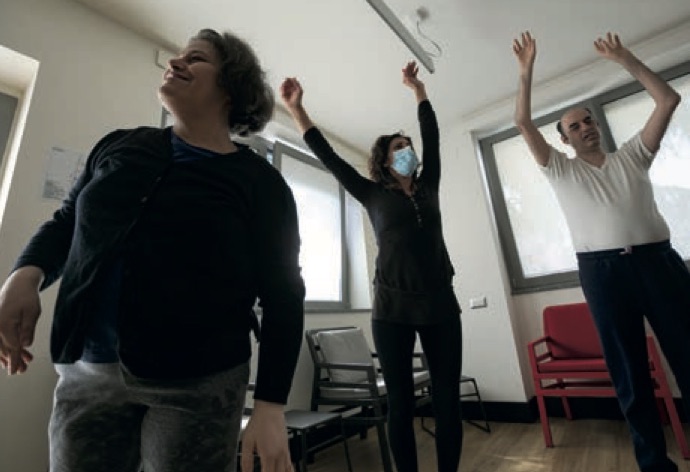I do not recognize you
Publish date 20-06-2020
Anti Covid masks complicate relationships.
A few days ago a girl of about 4 years accompanied by her mother looked me straight in the eye and asked me: "Why do you have that thing on your face too?", Obviously referring to the mask that never before had seen on my face. The answer I tried must not have seemed convincing to her at all, so much so as to push her to tell me that "dressed like this" I was ugly and that's it. Her mother, embarrassed, forced her to apologize, but I think it only made the situation worse, since at that point the girl turned her back on me saying that she would never speak to me again because "she didn't recognize me so much today". And so he did. I thought back then to when I was studying that around the 1950s a Scottish doctor - John Bowlby - had started talking about "attachment" between the infant and the adult, that is, of that innate behavior that pushes the child towards the other person to the need to seek security. The whole life of the relationship starts from the eye contact between the mother and the child. And the mother is primarily a face. The mutual attraction of the mother's and baby's eyes is favored by the richness and depth of these organs. Not for nothing is it said that "the first words of a love exchange their eyes"! In fact, parents tend to look at the child in a way that increases the probability that the child will look at them in turn and follow them, and after a while he will smile. So the firm decision was correct in the mind of my little friend: no face = no relationship!
 What to do? Of course these days I can't really take off my mask, even if the temptation would be strong! To convince myself, I took the trouble to go and reread something more about this type of protection. It was a German hygienist (Carl Flugge, 1847-1923) who demonstrated that a normal conversation between people could spread droplets (precisely the famous "Flugge droplets"!) Loaded with bacteria coming from everyone's nose and mouth: the scholar reported thus also the serious danger to the injuries of a patient from the mouth of a surgeon who is operating it. Flugge therefore confirmed the correctness of the intuition of two surgeons, one from Austria (Johann von Mikulicz Radecki) and one from France (Paul Berger), who since 1897 had begun to wear "masks" on the face made up of layers of gauze during the operations, obtaining a significant improvement in post-operative results.
What to do? Of course these days I can't really take off my mask, even if the temptation would be strong! To convince myself, I took the trouble to go and reread something more about this type of protection. It was a German hygienist (Carl Flugge, 1847-1923) who demonstrated that a normal conversation between people could spread droplets (precisely the famous "Flugge droplets"!) Loaded with bacteria coming from everyone's nose and mouth: the scholar reported thus also the serious danger to the injuries of a patient from the mouth of a surgeon who is operating it. Flugge therefore confirmed the correctness of the intuition of two surgeons, one from Austria (Johann von Mikulicz Radecki) and one from France (Paul Berger), who since 1897 had begun to wear "masks" on the face made up of layers of gauze during the operations, obtaining a significant improvement in post-operative results.
But going even further back in time, already at the time of the notorious "black plague" of the mid-1400s, rudimentary masks made of cloth were used to protect the nose and mouth from the "miasmas" (bad and smelly air) that he believed they were the cause of disease transmission. Around 1600 the doctor Charles de Lorme then devised other masks, with a hooked nose that looked like a beak, which was filled with spices - including dried flowers, lavender, thyme, garlic, myrrh, cloves - and straw. Even the eyes were covered with glass lenses. The "doctors with beak" wore a water-repellent robe up to their feet, along with gloves, hat and a stick that was used to lift the patients' clothes and visit them ... at a safe distance!
In short, for centuries men have rightly learned to "defend themselves" from infection by moving away, hiding their eyes, nose and mouth. In the event of an epidemic, fear is therefore identified in the image of an exposed human face. During a robbery, however, fear is concentrated in the image of a covered face, that of the bandit. All right and also all relative, one might say. But I keep asking myself: how can this be explained to a 4 year old girl?
See the focus Reflections in Time of Covid 19







